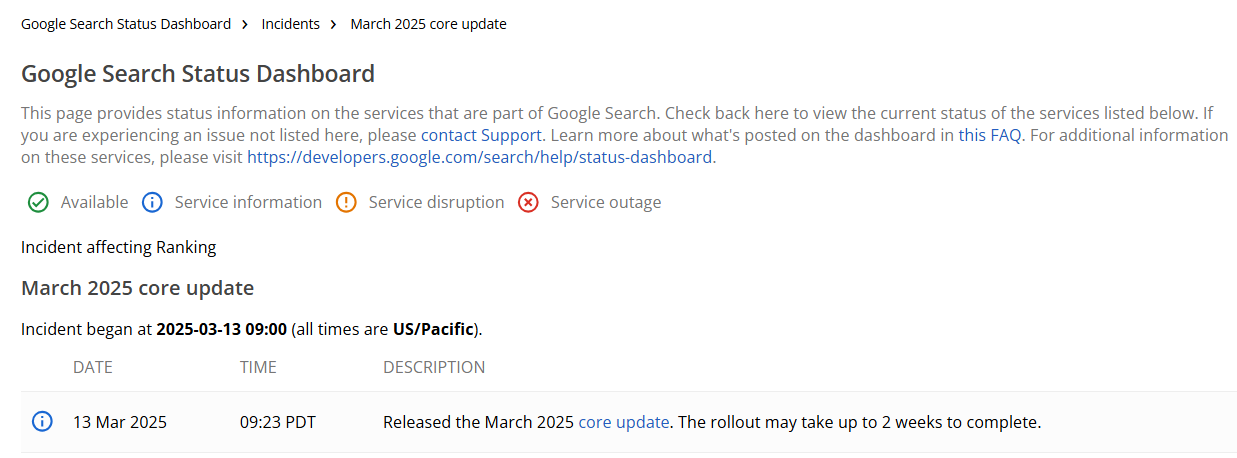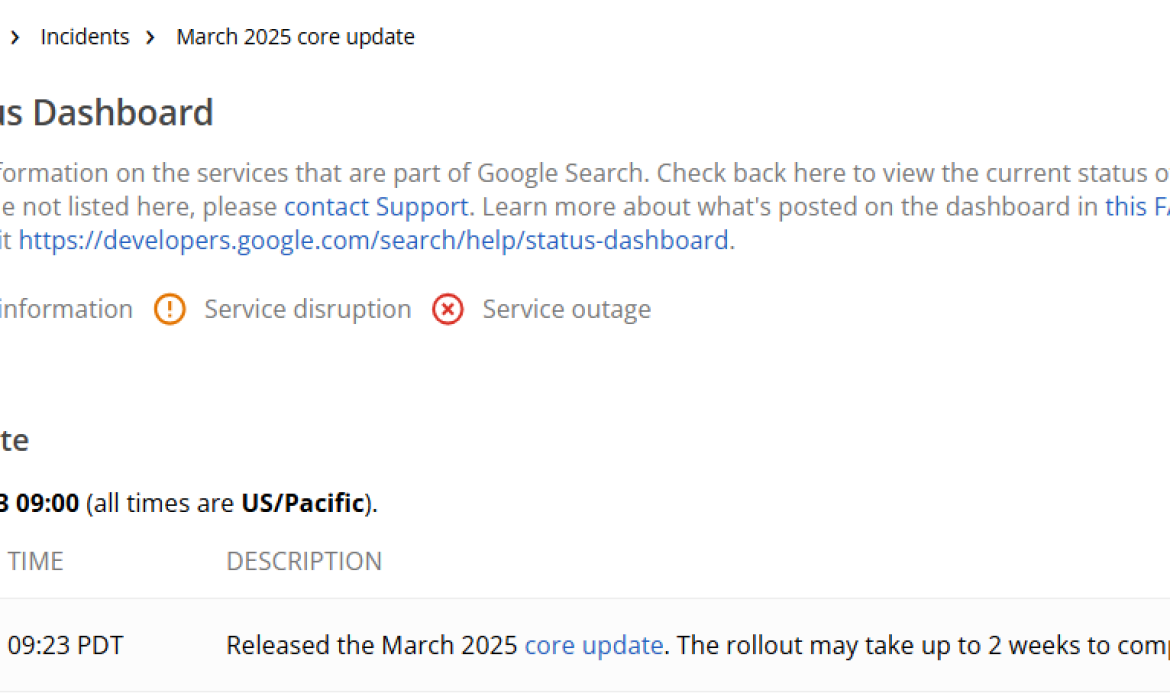Google’s March 2025 Core Update: Impact and SEO Strategies
Google’s algorithm updates are critical for businesses and website owners aiming to maintain or improve their rankings on search engine result pages (SERPs). On March 13, 2025, Google released its latest core update, marking another significant shift in how content is ranked. With the rollout expected to take up to two weeks, SEO professionals and content creators need to understand the implications of this update and how to adjust their strategies accordingly.
What is a Google Core Update?
Google regularly updates its search algorithms to improve the relevance and quality of search results. A core update is a broad change that affects search rankings across various industries. Unlike minor tweaks, core updates can significantly alter website visibility, favoring sites with high-quality content and user-focused optimizations.
According to Google’s official documentation, these updates are designed to ensure that searchers receive the most relevant and authoritative information available. While Google does not reveal the exact algorithmic changes, past updates have focused on E-E-A-T (Experience, Expertise, Authoritativeness, and Trustworthiness), page quality, and content relevance.

Key Changes in the March 2025 Core Update
Although Google has not disclosed specific ranking factors, SEO experts have identified key trends from early data analysis. Below are some of the primary changes observed:
1. Greater Emphasis on E-E-A-T
Google continues to refine its emphasis on Experience, Expertise, Authoritativeness, and Trustworthiness. Websites demonstrating real-world expertise and high authority in their niche are more likely to rank higher. This means that:
- Medical, financial, and legal websites (YMYL – Your Money, Your Life) are being scrutinized more rigorously.
- Author bylines, credentials, and expert contributions are playing a more significant role.
- Citations and backlinks from reputable sources are weighted more heavily.
2. Quality Content Over Quantity
Google has increasingly favored depth and originality over high content volume. Sites that frequently produce low-value or AI-generated content without human oversight may experience ranking drops.
To ensure compliance:
- Create long-form, well-researched content that adds real value.
- Avoid keyword stuffing and prioritize natural language processing (NLP).
- Use structured data to enhance the clarity of your content for search engines.
3. User Experience (UX) & Core Web Vitals
Page experience continues to be a critical ranking factor. Google’s Core Web Vitals update in 2021 emphasized metrics like Largest Contentful Paint (LCP), First Input Delay (FID), and Cumulative Layout Shift (CLS). The March 2025 update expands on this by prioritizing:
- Faster page speeds and optimized mobile responsiveness.
- Reduction in intrusive interstitials (pop-ups) that disrupt user experience.
- Improved accessibility features, including alt text for images and clear site navigation.
4. AI-Generated Content & Google’s Stance
With the rise of AI content generators, Google has tightened its stance on AI-driven content. AI-generated articles that lack original insights or human editorial oversight may be devalued. However, AI-assisted content that is fact-checked and well-structured can still perform well.
Who Will Benefit from This Update?
Certain industries and content strategies seem to have gained a boost from the March 2025 core update:
- Expert-driven blogs and websites with in-depth research and case studies.
- Authoritative news portals that provide fact-checked, timely information.
- E-commerce websites with well-optimized product descriptions and unique content.
- Local businesses with strong user engagement metrics and high-quality customer reviews.
Who Might Be Negatively Impacted?
On the flip side, some websites have experienced ranking drops:
- Thin affiliate sites that provide minimal value beyond outbound links.
- Low-quality AI-generated content mills that lack editorial oversight.
- Websites with slow-loading pages and poor mobile usability.
- Sites with outdated or misleading content that lack trustworthiness.
SEO Strategies to Adapt to the March 2025 Core Update
If your website has been negatively affected by this update, here are some actionable steps to recover and improve your rankings:
1. Audit and Improve Content Quality
- Conduct a content audit to identify outdated or low-performing pages.
- Refresh old articles with new data, insights, and multimedia elements.
- Enhance your E-E-A-T signals by including expert quotes, references, and verifiable information.
2. Optimize Technical SEO
- Improve page load speed by optimizing images, using a CDN, and minifying CSS/JavaScript.
- Ensure that your site is fully mobile-friendly and passes Google’s Mobile-Friendly Test.
- Fix broken links, duplicate content, and schema markup errors.
3. Leverage Structured Data & Schema Markup
Google rewards websites that use structured data to provide better context. Implement:
- FAQ schema for informative content.
- Product schema for e-commerce listings.
- Author schema to highlight expert contributors.
4. Enhance User Experience (UX)
- Reduce intrusive pop-ups and ads that interfere with navigation.
- Optimize site structure for better internal linking and ease of access.
- Improve engagement signals like dwell time, bounce rate, and click-through rates (CTR).
5. Monitor Performance with Google Search Console
- Use Search Console to track ranking changes, indexing issues, and crawl errors.
- Check the Page Experience report to identify and fix UX problems.
- Regularly monitor Google Analytics for traffic trends and user behavior shifts.
Final Thoughts
Google’s March 2025 Core Update is another step toward higher-quality search results that benefit users. The key to thriving in this evolving SEO landscape is to prioritize content quality, technical optimization, and user experience. Websites that consistently provide value, maintain credibility, and adapt to these changes will continue to perform well in search rankings.



